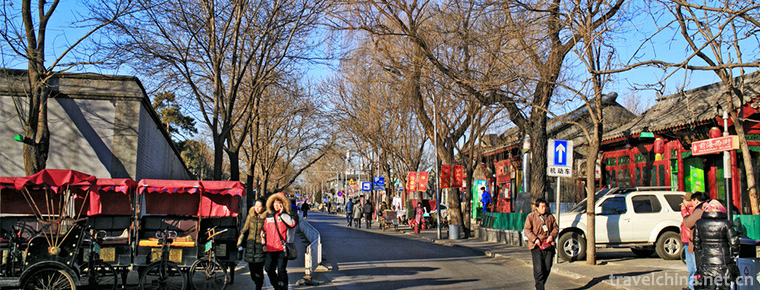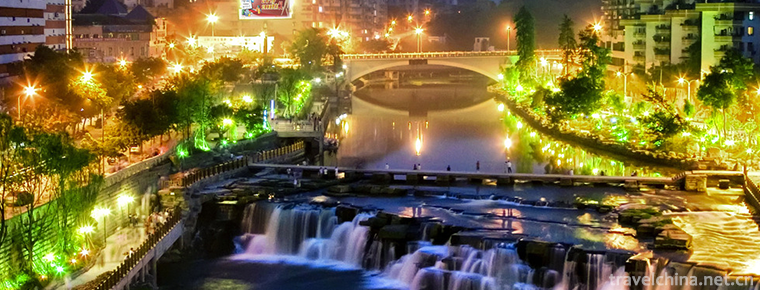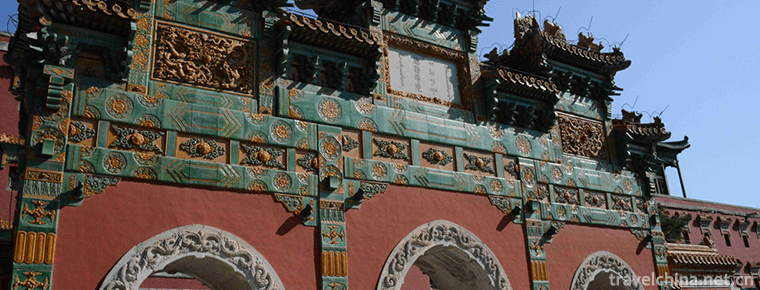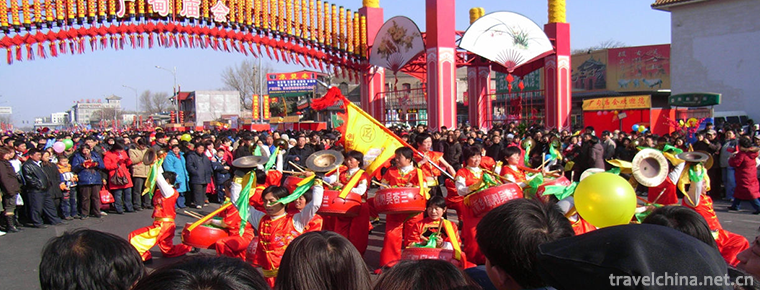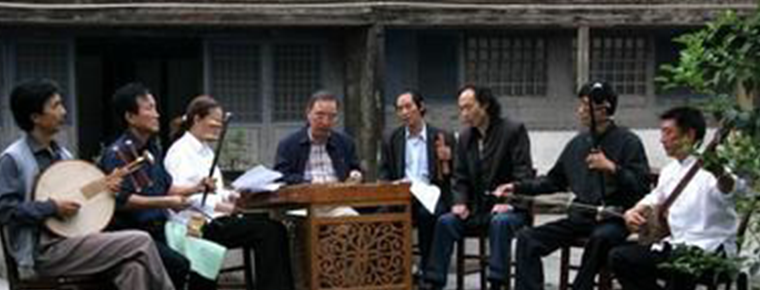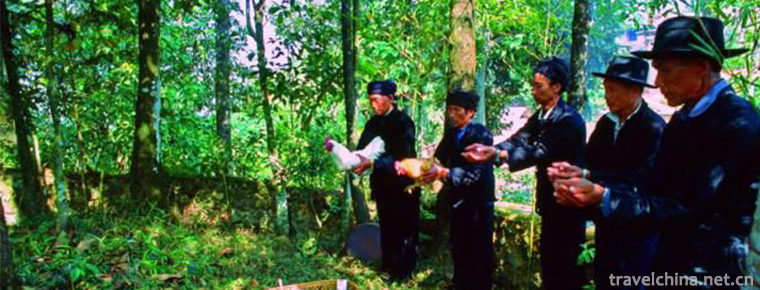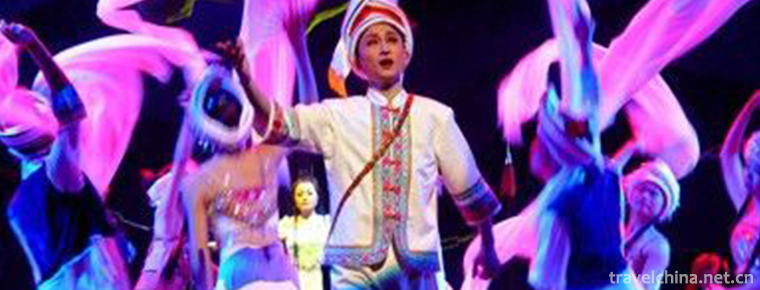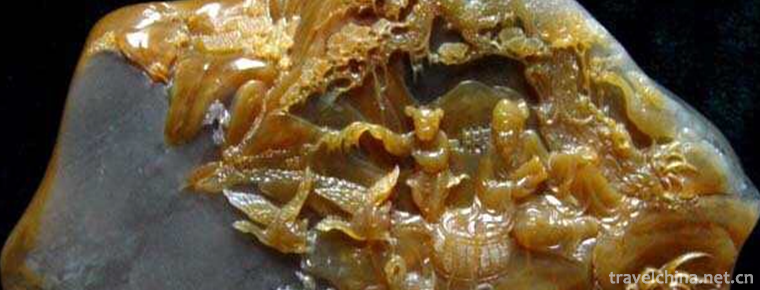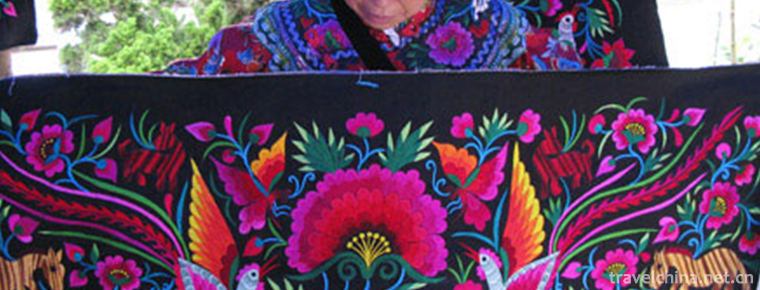Ningbo Opera
Ningbo Opera
Yong Opera, a local traditional drama in Ningbo, Zhejiang Province, is one of the national intangible cultural heritage.
Yong Opera is a local opera sung in Ningbo dialect of Zhejiang Province. Its musical tone belongs to Tanhuang. After 1938, this opera genre was officially called "Yongju" or "improved Yongju". Yongju's performance style is exaggerated and humorous, and it is good at expressing real and implicit emotions. Yongju opera has gone through the process of performing Qingsuit opera and suit Qipao opera. It is good at performing modern opera. It draws creative materials directly from social life and focuses on life-oriented performances.
On June 7, 2008, Yongju Opera was approved by the State Council of the People's Republic of China to be included in the second batch of national intangible cultural heritage list, numbered IV-107.
historical origin
Yongju was bred from the field in Ningbo. It was first sung in Ningbo and nearby areas. It was called a string guest during the reign of Qianlong and Jianian in Qing Dynasty. Later, it was also called Ningbo Tanhuang, Siming Wen Opera and improved Yong Opera. Finally, it was named Yong Opera.
Before the founding of New China, Yong Opera was quite active in Shanghai, Ningbo and other places, and many performing groups appeared.
In 1944, the performance venue of Yongju Theatre Troupe was transferred from the imperial palace to Hengya Theatre. For the first time, Siming Opera was publicly called "improved" and a banner "Ala improved" was put on the performance site.
In 1950, Shanghai established the "Yongju Improvement Association" and a 35-member fraternity with Fan Tingfang as its chairman and Huang Zhenshi as its vice-chairman.
In 2011, Ningbo City established Yongju Research and Interpretation Center.
In 2013, Yongju has built a mini-museum, which includes precious historical and cultural materials. Local focus on sorting out "pulling orchids" and other four small plays, and invite the old artists still alive to come out of the mountains, the original flavor of the show on the stage.
Cultural characteristics
Makeup
During the period of "Siming Wen Opera", Danjiao, the performance of "Ningbo Tanhuang", began to use lead powder to make up the face. Lip makeup is usually carried conveniently with folded carmine plate covered with a gold mark. Those theatres with poor economic conditions put on makeup after soaking their faces with red paper and using ash from the bottom of the pot as coal black. After the 1940s, most cosmetics were made with water powder, while eyebrows were painted with brush and ink. It was not until 1950 that the use of oil paint began.
Historically, there is no Facebook record. Generally, "clown" is a mole or some white powder, some "cap" after the "horn bun". Some old "horns" are mostly painted and licked (such as wrinkles and beards) instead of moustache. Some "male dan" performances in Shanghai teahouses and entertainment venues, in order to make up for the shortcomings in body shape, pay special attention to the artistic effect of makeup and clothing. In the 1920s, some actresses often neglected the importance of stage make-up, because actresses appeared on stage instead of "male dan" and their plays mainly represented urban life.
clothing
Early Ningbo "travelers" in some "grass and flower operas" in the general public wear diagonal or paired skirts, under the apron, some wear felt caps, wear cattail straw shoes. In some "Qingke Opera", many literati wear long gowns, red-crowned mound caps and "double beam" shoes.
By the late 1930s, "Danjiao" began to wear cheongsam, and some wore popular fashion to perform on stage. Actors don't pay much attention to the age of their characters in their clothes. It was not until the period of "improvement" that actors really began to pay attention to the stage effect of costumes.
After liberation, people began to attach importance to garment shape and materials. "In the clean-up show, the materials used in the trousers, red caps and underwear (horseshoe sleeves) are gentle, the color is avoided to be too heavy, the width is appropriate and cut according to the body type to reduce the weight and stiffness; while for women's clothing, the materials are mostly made of tattoo, ribbon, satin, yarn and grain, and the cotton dark flowers are often woven and forked high to show the waist of women. Some of them have narrowed the wide edge and matched with a hundred-pin skirt. (Xu Tao's Stage Art)
Prop
During the period of "traveling", actors mostly only have props to carry when they perform "couplet play". The stage is at most one desk, two chairs, or one desk and one chair. Most of the "improvements" in the 1940s were fashion dramas. On the stage, objects were used as props. The male actors used folding fans, the female actors took a handkerchief, or some other very simple daily necessities. After liberation, modern drama was mainly performed. Because of the need of the plot, the function of some props has not only played the role of decoration and foil, but also become an indispensable part of the development of dramatic contradictions.
Scenery
In the stage of "Ningbo Beach Spring", performers usually don't need scenery to perform in teahouses and pubs. In the 1940s and early 1950s, there were scenes of Jigong Living Buddha and Tien Luo Girl, such as "water tank coming out", "shell explosion", "oil frying Jigong", "open cabinet missing" and "flying knife rebounding". At that time, "the most popular folk painter was Wang Yunlin, who painted scenery in pursuit of perspective stereo, especially some utensils and sundries, four meters away, can be almost untrue." (Xu Tao's Stage Art)
The most influential stage art scenery design work after liberation is the modern play "Old Friend" designed by Li Ronggen and Zhou Dongzhao in 1964. After two revisions to the dance design, the play finally uses "small devices" (partial replacement of small scenery), seamless yarn and multi-level color (there was no projection slide at that time) to show the branches, walls and flowers of the sky curtain, near and middle scenes, some of which are tied up with paper, stacked with plastic, and three-ply boards. These arrangements are very realistic with the light.
Tune
Yongju opera has rich musical tunes, including "basic tune" and "Siming Nanci", which evolved from rural Tiantou folk songs, folk songs and news singing, and "fast second spring", "slow second spring" tunes and some local minor tunes brought by random play classes. "Basic tone" is mainly used to narrate the plot, "Siming Nanci" is mainly used to express people's feelings, "Erhuang" is mainly used to express high-spirited emotions, while minor is used to express some special emotions.
Representational repertoire
The representative repertoires of Yong Opera include "Half a pair of scissors", "Heaven is going to rain the mother to marry", "Snail Girl", "Pawn Wife" and so on.
Distribution area
The distribution area of Yongju was concentrated in Yinxian and Fenghua in the early stage, and then gradually spread throughout Ningbo and Zhoushan townships.
Inheritance and Protection
Inheritance value
The existence of Yongju makes Ningbo have a drama representing its own unique image, and from this local drama, it reflects the characteristics of Ningbo city and the values of Ningbo people. Its modernity, openness, popularity, folklore, dialectalization, realism, pragmatic attitude, inclusive measurement, good at learning, absorbing, digesting, never self-confident characteristics, suitable for the creation of advanced culture characteristics, it provides a sample for the prosperity of Ningbo literature and art.
Current situation of inheritance
Ningbo Yong Opera Troupe is the only professional performing troupe in Ningbo City, which is in urgent need of protection and support from relevant parties.
Heritage figures
Yang Liuting, male, Han nationality, born in November 1947, is a Ningbo native, a national first-class actor, the first batch of national intangible cultural heritage project successors, declared by Ningbo City, Zhejiang Province.
protective measures
On September 1, 1950, Zhengfeng Research Society was formally established with Fan Xingfan's strong financial support.
Since April 2011, Wangjiang Primary School, in cooperation with the Ningbo League, has carried out the research on the inheritance and development of culture in rural campuses. It has compiled the first textbook for children in Ningbo, Rural Rhyme and Simple Learning of Ningbo Dialect. Professional teachers have also been invited to teach children Ningbo dialect, singing and body form from scratch.
On June 7, 2016, Ningbo Foreign Affairs (Literature and Art) School was going to recruit students from professional classes. Chen Xiangyuan looked envious: "With the growth of age, we may have about 10 years left to choose the bearer of this biography. If only the foreign affairs school could also open Siming Nanci professional classes, in my opinion, this is to train successors. It's the quickest and most efficient way for people.
On June 16, 2008, it was listed in the second batch of national intangible cultural heritage list and the first batch of national intangible cultural heritage expansion project list.
social influence
Important performances
In 1950, Zhengfeng Research Society officially performed "Storm and Rain Night".
On October 18, 2018, Ningbo Yong Opera Company Limited performed Thunderstorm at Meilan Theater.
Honorary recognition
In 1989, Chen Shasha, Yu Jie and other performers in Ningbo Television Broadcast "Girl Snail" won the third prize of the 10th National Excellent Teleplay "Flying Sky Award" drama and television drama, and the fourth National Excellent Teleplay "Panzhihua Award" excellent multi-copy second prize.
In 1989, the play "Love Cross" won the first prize of stage in the 4th Zhejiang Drama Festival.
In 1991, the opera "Bright Eye Brother" and "Heaven Wants Rainy Niang Wants to Marry" won the design award of the first stage art exhibition in Zhejiang Province.

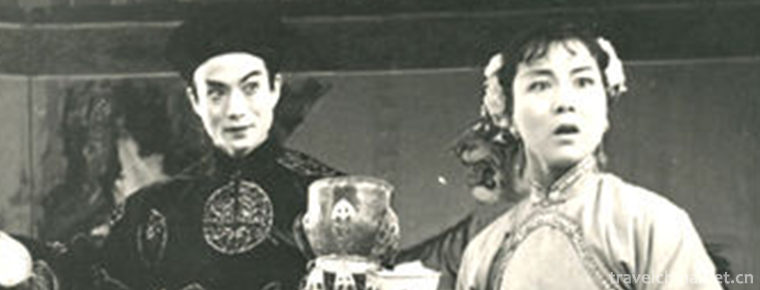
-
Drifting in Baotianbang Canyon
Baotianbang Canyon Drifting Scenic Area is located in Neixiang County, Nanyang City, Henan Province, which is an excellent tourist city in China. Baotianman is the only World Biosphere Reserve in Hena.
Views: 149 Time 2019-01-02 -
Guo Moruos Former Residence in Beijing
Guo Moruo's former residence is located at No. 18, Qianhaixi Rim, Xicheng District. Originally a garden in Heling in Qing Dynasty, it became the forage yard and stables of Yixian Mansion of Prince Gon.
Views: 352 Time 2019-01-13 -
Pingle Ancient Town
Pingle Ancient Town, located 93 kilometers southwest of Chengdu and 18 kilometers southwest of Qionglai City, is a famous historical and cultural town in China. .
Views: 164 Time 2019-02-07 -
Putuo Zong Cheng
Putuo Zongcheng Temple, located in the north of Chengde Summer Resort and south of Shizigou, Hebei Province, covers an area of 220,000 square meters.
Views: 154 Time 2019-02-07 -
Changdian Temple
Changdian Temple Fair is a traditional folk custom and folk religious belief activity in Beijing. Among the many temple fairs in the old capital city, only the temple fairs in Changdian.
Views: 171 Time 2019-04-16 -
Enshi dulcimer
Enshi Yangqin, also known as Enshi Silk String, was made up of Hunan Opera, Southern Opera, Chu Tune, folk minor, instrumental music licensing scholars and .
Views: 109 Time 2019-04-28 -
Sacrifice forest
Sacrifice to the gods of villages, as well as "Amaron" and "Pumatu" and other names, is a traditional festival of the Hani people, which takes villages as units and integrates reli.
Views: 143 Time 2019-05-05 -
Southern Drama
Nan Opera, also known as Nan Opera and Shi Nan Diao, commonly known as "Gaotai Opera" or "People's Congress Opera", is a local opera in Enshi Tujia and Miao Autonomous Prefecture o.
Views: 266 Time 2019-06-07 -
Shoushan stone carving
Shoushan Stone Carving is a traditional folk carving art. It is made of Shoushan Stone, which is produced in the northern mountain area of Fuzhou. It is a small carving for people to enjoy through spe.
Views: 111 Time 2019-06-15 -
Suni embroidery of the Yi nationality
Sani embroidery is a unique technology with a long history. There are many kinds of flower picking techniques, such as picking, embroidering, filling, receiving, buttoning, single-sided picking and do.
Views: 264 Time 2019-07-12 -
Yele Nature Reserve
Yele Nature Reserve is located in Yele Township, north of Mianning County, Sichuan Province, bordering on the south of Shimian County, Ya'an City. It is a provincial nature reserve. It is 70 kilometers away from Mianning County..
Views: 234 Time 2020-10-16 -
Soil characteristics of Suining
The strata in Suining City are mainly limestone in the lower part and purplish red sandy soil and mudstone in the upper part. Therefore, Suining area is also known as "red soil land"..
Views: 296 Time 2020-12-16

